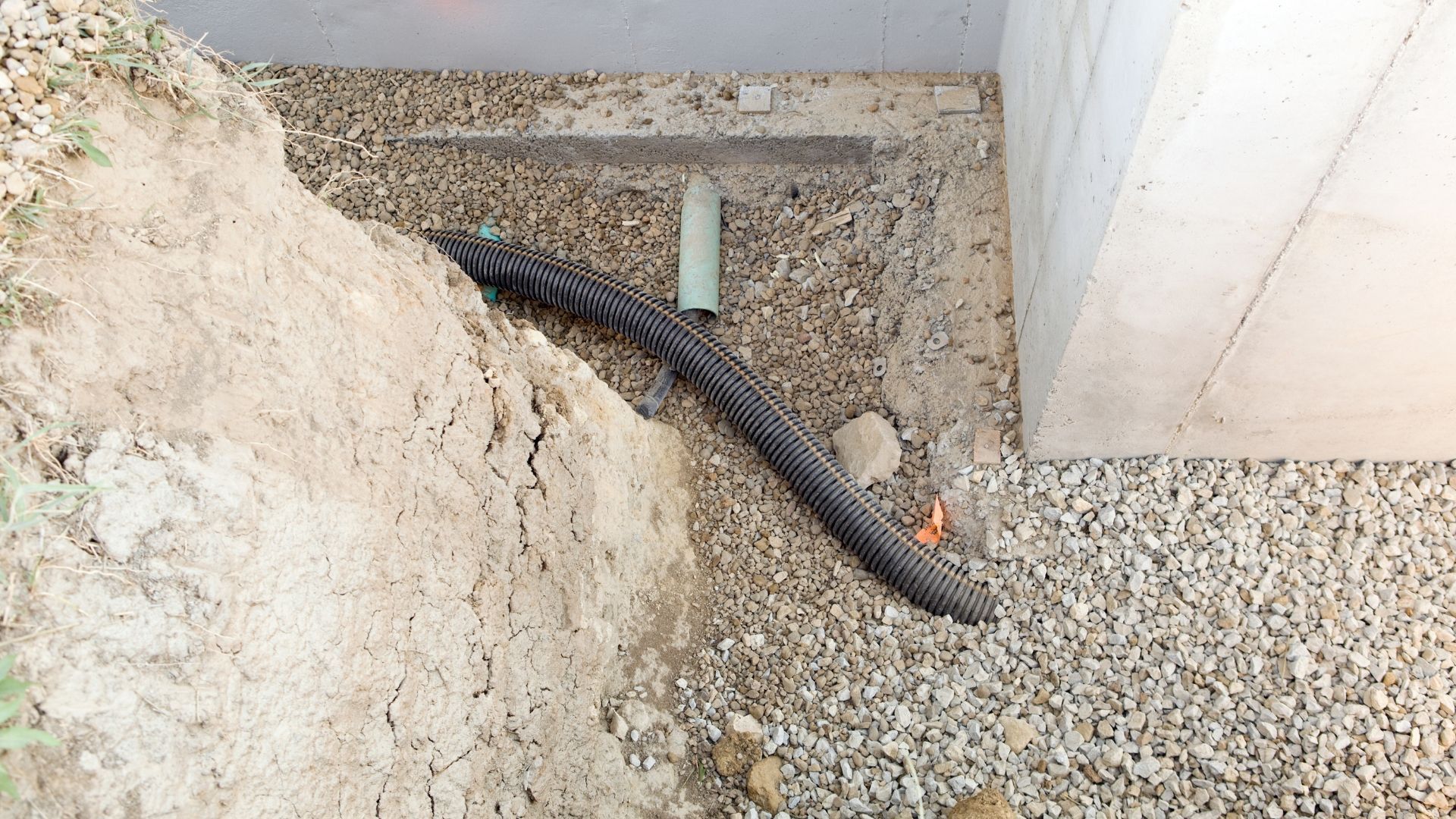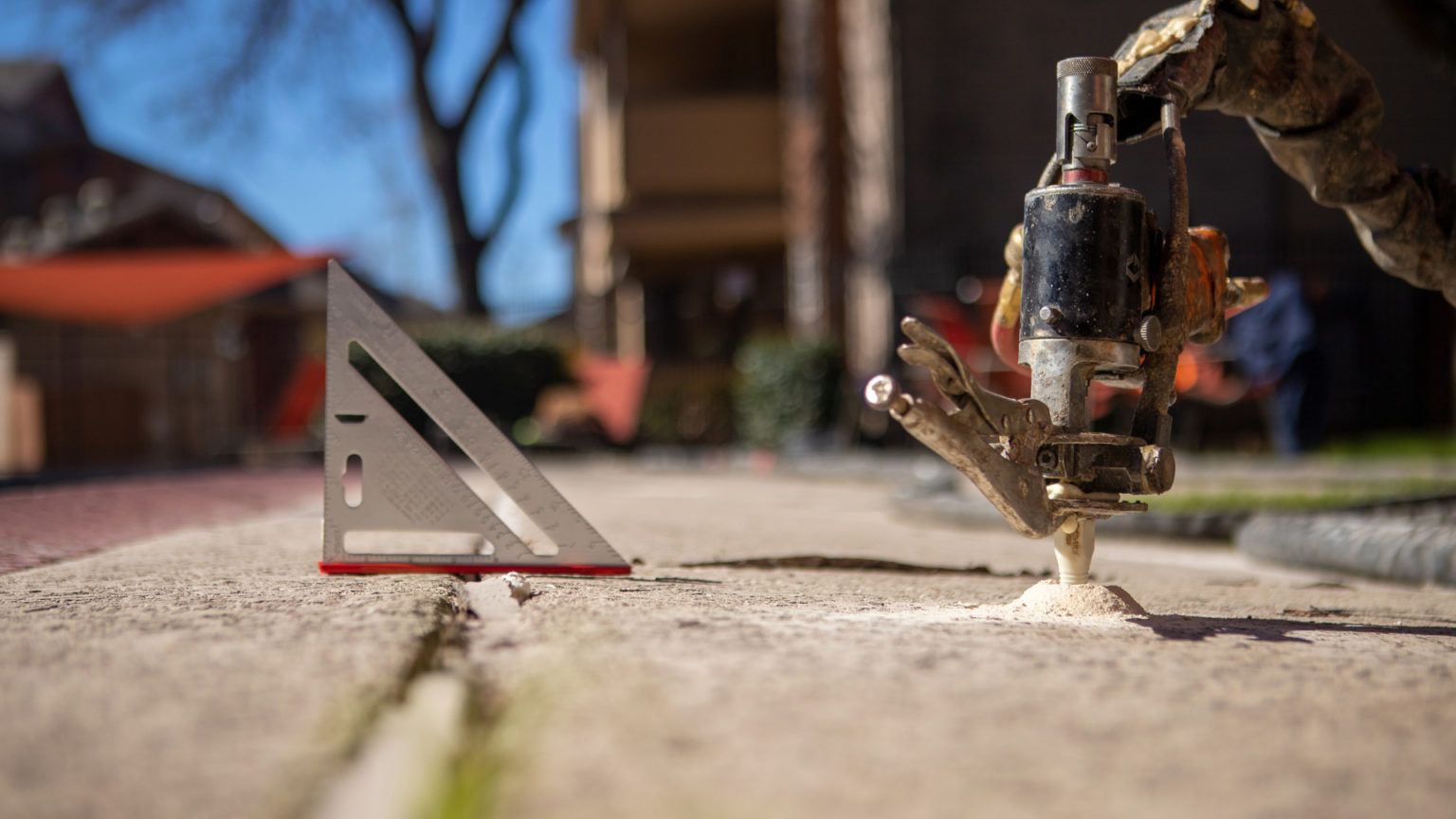Blog

If you’ve ever dealt with water pooling around your home or a damp basement, you understand how frustrating it can be. A drain tile system is a great solution for managing excess water, and it plays a big role in protecting your home and property. But what exactly is a drain tile system? Let’s break it down in this blog. Understanding Drain Tile Systems A drain tile system is a type of subsurface drainage designed to move water away from areas where it can cause damage. Typically, these systems consist of perforated pipes buried underground, which allow water to enter and be guided away to a designated drainage area. This helps prevent water from gathering on the surface, reducing the risk of flooding and water damage. There are multiple types of drain tile systems, each tailored for specific applications, including interior, exterior, and yard drain tile systems. Let’s get into what an exterior drain tile system is. Exterior Drain Tile System While general drain tile systems focus on surface water management, an exterior drain tile system specifically targets the area around your home’s foundation. This specific system is made to direct water away from the foundation, making sure it remains dry and protected. Exterior drain tile systems consist of perforated pipes placed around the perimeter of your home’s foundation. As water seeps in, it enters these pipes, which then direct it into a sump pit. From there, the water is pumped away from the home, effectively preventing moisture from entering your living space. Why You Need an Exterior Drain Tile System Installing an exterior drain tile system provides necessary protection for your home. It minimizes the risk of water damage, like leaks, mold growth, and structural issues. You help keep a dry, safe environment inside your home by directing water away from the foundation. Not to mention, a properly functioning exterior drain tile system can boost your property’s overall value by preventing potential water-related problems in the future.

Today, we're diving into an important topic that might not be on your radar but is essential for the safety and health of your home and loved ones: radon. Understanding where radon comes from and how to protect your home can make a huge difference in keeping a safe living environment. So, where does radon come from? Let’s get into how to protect your home. What is Radon? Radon is a colorless, odorless, and tasteless gas that occurs naturally in the environment. It is produced by the decay of uranium, which is found in soil and rock. As uranium breaks down, it releases radon gas into the air. Radon can enter homes through cracks in floors, walls, and foundations, and through gaps around service pipes and drains. Where Does Radon Come From? Radon is a byproduct of the natural radioactive decay of uranium found in soil, rock, and groundwater. The concentration of radon in the soil can vary depending on the geographic location, but high levels can collect in any home. Here’s a closer look at how radon migrates into buildings: Soil and Rock : Radon gas comes from the ground and can seep into homes through the foundation, particularly if the home is built on or near uranium-rich soil. Building Foundations : Cracks in the foundation, construction joints, and gaps around pipes and cables can provide entry points for radon into your home. Groundwater : Radon can also be released into the air from groundwater and well water, particularly if the water contains high levels of radon. Why is Radon a Concern? Radon is the second leading cause of lung cancer after smoking, according to the Environmental Protection Agency (EPA). The risk is particularly high for those who are exposed to radon over long periods. The health risk stems from radon decay products that can become trapped in the lungs, where they release radiation that damages lung tissue. How to Protect Your Home Protecting your home from radon involves a combination of testing and mitigation strategies. Here are some practical steps you can take: Test Your Home : The first step in radon protection is to test for radon levels. Testing kits are available at hardware stores or can be provided by professionals. Short-term tests (lasting a few days) and long-term tests (lasting several months) can help determine if your home has elevated radon levels. At Senegal Specialty Contracting, we offer convenient radon testing to assess your home's levels. Install a Radon Mitigation System : If high radon levels are detected, installing a radon mitigation system is essential. The most common system involves a vent pipe and fan that pulls radon from beneath the home and vents it outside. Seal Cracks and Openings : Sealing cracks in the foundation and around service pipes can help reduce radon entry. While sealing alone is not a final solution, it is a useful step to implement with other mitigation measures. Improve Ventilation : Increasing ventilation in your home can help dilute radon levels. This can be done through mechanical ventilation systems or by increasing the natural ventilation in your home. Radon-Resistant New Construction : If you are building a new home, consider incorporating radon-resistant construction techniques. This can include installing a gas-permeable layer beneath the slab, using a radon vent pipe, and ensuring proper sealing of openings. Regular Maintenance : Ensure that your radon mitigation system, if installed, is regularly maintained and monitored so it continues to function effectively. Omaha's Specialty Contractor Radon is a serious health risk that can affect homes in any location. Understanding where radon comes from and how to protect your home will help keep you and your family safe. At Senegal Specialty Contracting, we are committed to helping you create a safe and healthy living environment. If you suspect that your home might be at risk, don't hesitate to contact us for professional radon testing and mitigation services. Contact Senegal Specialty Contracting today to schedule your radon test. Your health and safety are our top priorities.

Concrete is a flexible and durable material that can be used for many construction projects. However, over time, concrete surfaces can develop issues such as settlement, which can lead to unevenness and safety hazards. One alternative solution to address concrete settlement is through a process known as concrete raising. In this blog, we will address the question, what is concrete raising? Concrete raising, also referred to as slab jacking or mud jacking, is a technique used to lift and level sunken or uneven concrete surfaces . Rather than having to replace the entire slab, concrete raising is a great alternative and can repair the sunken area. This method can save you time and money.
